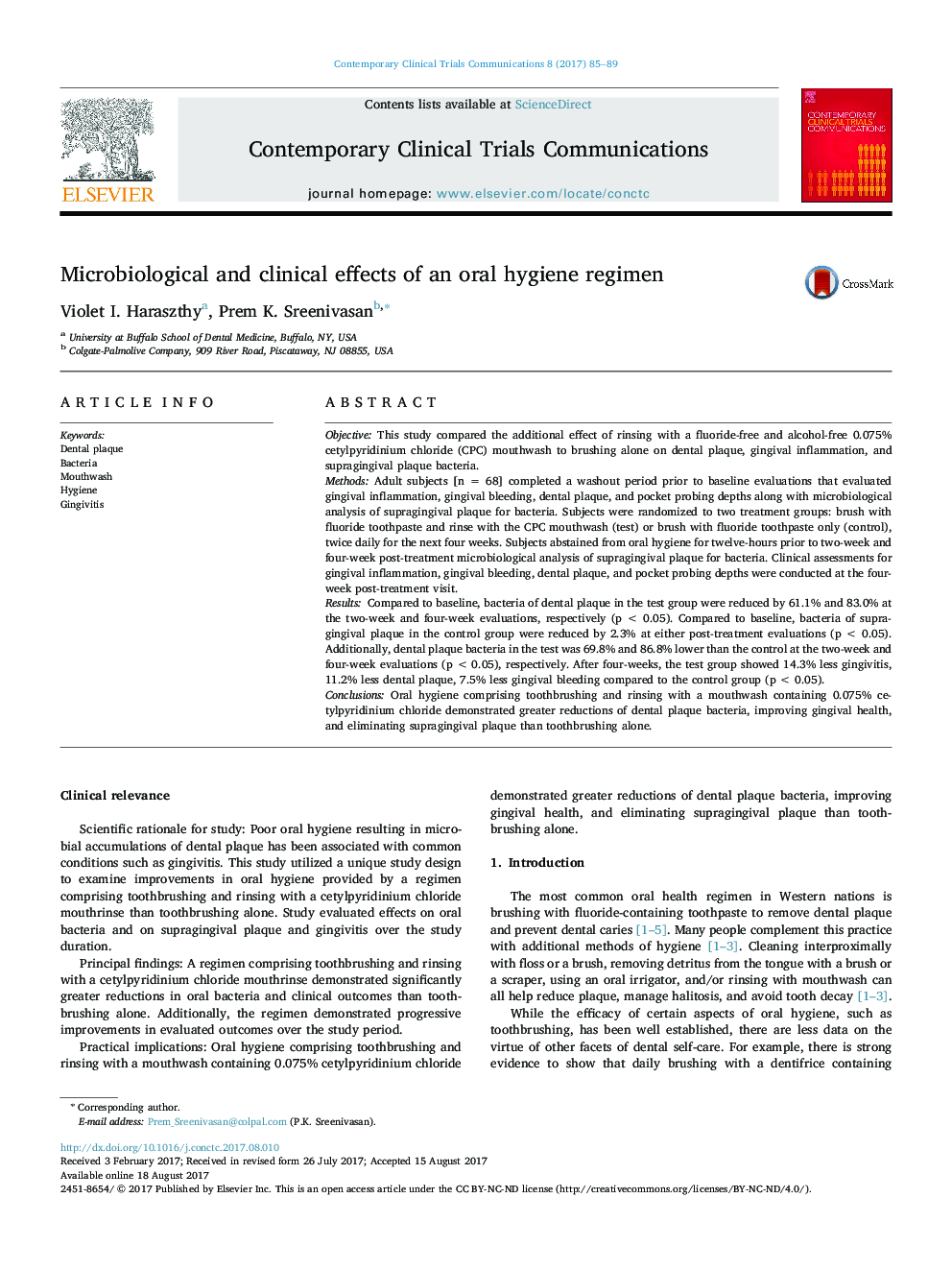| کد مقاله | کد نشریه | سال انتشار | مقاله انگلیسی | نسخه تمام متن |
|---|---|---|---|---|
| 5549623 | 1556789 | 2017 | 5 صفحه PDF | دانلود رایگان |
ObjectiveThis study compared the additional effect of rinsing with a fluoride-free and alcohol-free 0.075% cetylpyridinium chloride (CPC) mouthwash to brushing alone on dental plaque, gingival inflammation, and supragingival plaque bacteria.MethodsAdult subjects [n = 68] completed a washout period prior to baseline evaluations that evaluated gingival inflammation, gingival bleeding, dental plaque, and pocket probing depths along with microbiological analysis of supragingival plaque for bacteria. Subjects were randomized to two treatment groups: brush with fluoride toothpaste and rinse with the CPC mouthwash (test) or brush with fluoride toothpaste only (control), twice daily for the next four weeks. Subjects abstained from oral hygiene for twelve-hours prior to two-week and four-week post-treatment microbiological analysis of supragingival plaque for bacteria. Clinical assessments for gingival inflammation, gingival bleeding, dental plaque, and pocket probing depths were conducted at the four-week post-treatment visit.ResultsCompared to baseline, bacteria of dental plaque in the test group were reduced by 61.1% and 83.0% at the two-week and four-week evaluations, respectively (p < 0.05). Compared to baseline, bacteria of supragingival plaque in the control group were reduced by 2.3% at either post-treatment evaluations (p < 0.05). Additionally, dental plaque bacteria in the test was 69.8% and 86.8% lower than the control at the two-week and four-week evaluations (p < 0.05), respectively. After four-weeks, the test group showed 14.3% less gingivitis, 11.2% less dental plaque, 7.5% less gingival bleeding compared to the control group (p < 0.05).ConclusionsOral hygiene comprising toothbrushing and rinsing with a mouthwash containing 0.075% cetylpyridinium chloride demonstrated greater reductions of dental plaque bacteria, improving gingival health, and eliminating supragingival plaque than toothbrushing alone.
Journal: Contemporary Clinical Trials Communications - Volume 8, December 2017, Pages 85-89
